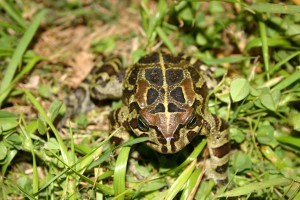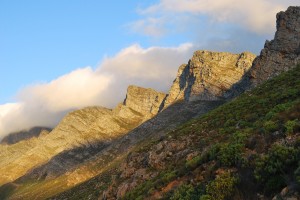 Returning < home after a visit to friends on a dark and rainy night recently, it was amazing to see hundreds of little frogs jumping in the road, seeming to enjoy the downpour that was washing the tarmac.
In the UNESCO-registered biosphere reserve where I live and work, after an overnight downpour it is possible to hear the croaking of myriad frog species in the marshes and bogs and amongst the fynbos of this unique area. This cacophony of calls is music to my ears because nearly one-third of the world’s amphibian species are now on the verge of extinction.
Despite having survived the gargantuan forces of asteroid crashes and massive geological upheavals, frogs and other amphibians are now vulnerable to factors ranging from widespread pollution, infectious diseases, invasive species, and habitat loss, to the effects of climate change.
Returning < home after a visit to friends on a dark and rainy night recently, it was amazing to see hundreds of little frogs jumping in the road, seeming to enjoy the downpour that was washing the tarmac.
In the UNESCO-registered biosphere reserve where I live and work, after an overnight downpour it is possible to hear the croaking of myriad frog species in the marshes and bogs and amongst the fynbos of this unique area. This cacophony of calls is music to my ears because nearly one-third of the world’s amphibian species are now on the verge of extinction.
Despite having survived the gargantuan forces of asteroid crashes and massive geological upheavals, frogs and other amphibians are now vulnerable to factors ranging from widespread pollution, infectious diseases, invasive species, and habitat loss, to the effects of climate change.
 Found in fynbos, riparian and wetland vegetation, frog species like the Cape river frog provide an enormous service as they consume large quantities of mosquitoes, moths, ants, beetles and other insects, while tadpoles keep our waterways clean by feeding on algae. Frogs and tadpoles are also an important link in the food chain, serving as food for birds, fish, mongooses and baboons.
Found in fynbos, riparian and wetland vegetation, frog species like the Cape river frog provide an enormous service as they consume large quantities of mosquitoes, moths, ants, beetles and other insects, while tadpoles keep our waterways clean by feeding on algae. Frogs and tadpoles are also an important link in the food chain, serving as food for birds, fish, mongooses and baboons.
Frogs require suitable habitats in both terrestrial and aquatic environments and because they are especially susceptible to environmental disturbances, they are considered to be accurate indicators of environmental stress – they absorb toxins through their permeable skin and if their habitat is polluted they begin to die. As an indicator species, frogs therefore provide an alarm call when something is drastically wrong in an environment and, as such, may be considered “canaries in the cage”.
Frogs will not give us warts if we touch them, nor will they turn into handsome princes if we kiss them. They will, however, thank us for doing everything possible to keep their habitats pristine.